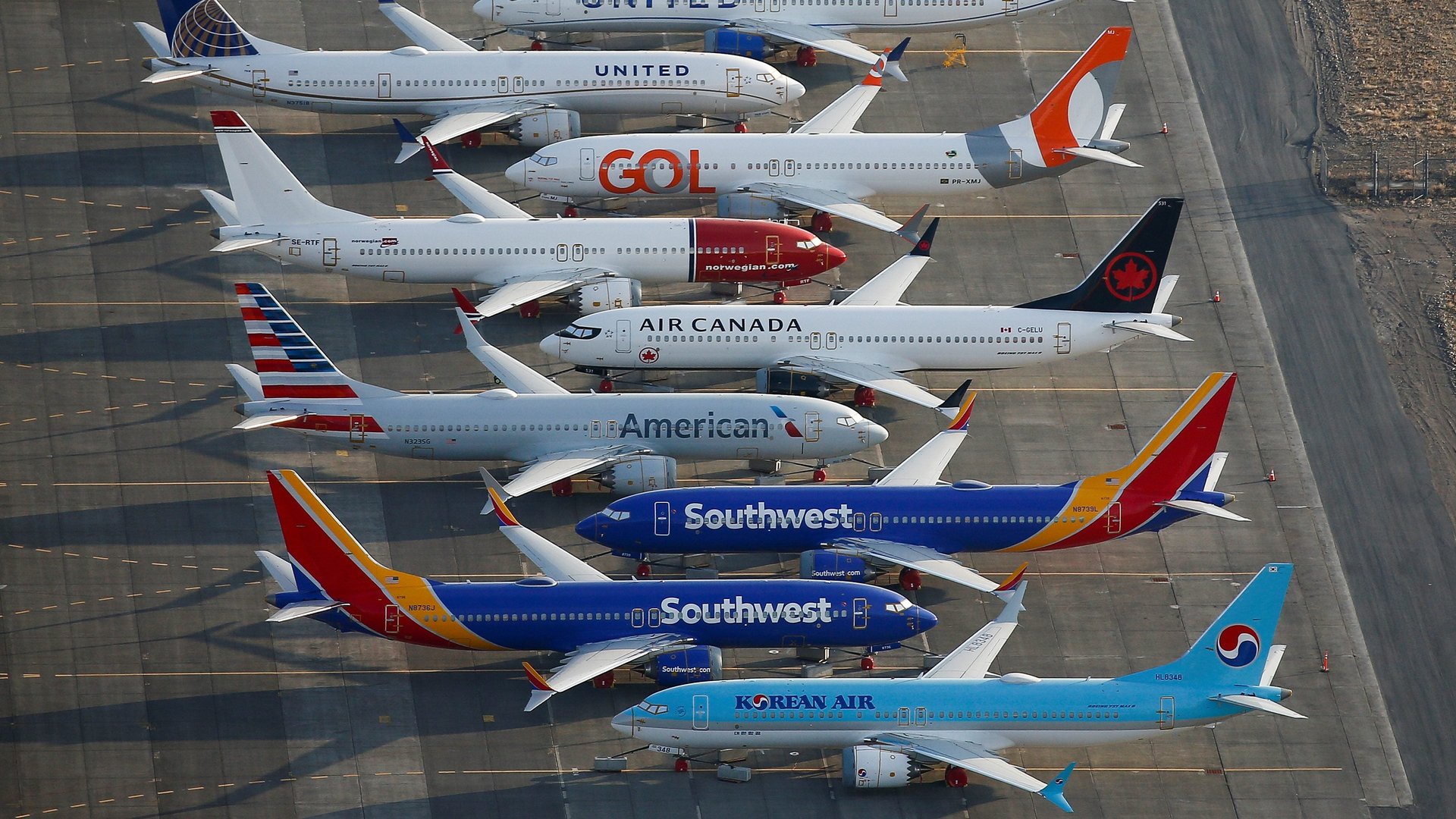Southwest pilots are suing Boeing for “misleading” them into flying the 737 Max
Another day, another lawsuit against Boeing over the 737 Max.


Another day, another lawsuit against Boeing over the 737 Max.
The Southwest Airlines Pilots Union, or SWAPA, yesterday (Oct. 7) sued the airplane manufacturer (pdf) alleging that it got them to agree to fly the new aircraft using “false representations” about its airworthiness and its similarity to earlier models of the 737 line. The aircraft has been involved in two deadly crashes that killed 346 people, both linked to a new flight system that would point the plane’s nose sharply downward in response to data. However, pilots were not told about the existence of the system until after the first crash in October last year in Indonesia of a Lion Air flight.
“We have to be able to trust Boeing to truthfully disclose the information we need to safely operate our aircraft,” said SWAPA president Jonathan L. Weak. “In the case of the 737 MAX, that absolutely did not happen.”
The Dallas-based carrier was the first to place orders for the 737 Max in 2011. After the second deadly crash in March in Ethiopia, the plane was globally grounded and the date of its return to service is unclear. The lawsuit says that Southwest’s 9,700 pilots have lost some $100 million in earnings due to the plane being grounded.
Boeing has faced sharp scrutiny over its design of the system, called the Maneuvering Characteristics Augmentation System, which was set to trigger in response to data from a single sensor—which is an engineering no-no given the stakes involved—and was designed to reset repeatedly. In both crashes, the system went off in response to faulty data, and pilots were unable to counteract the system, leading both aircraft to nosedive. A similar Boeing system on a military plane was better designed, for example requiring more than one data source to activate. The SWAPA lawsuit, filed in a Dallas district court, alleges that Boeing “rushed” the model to market and engaged in “systematic marketing of the 737 MAX as an extension of the 737 family of aircraft with minimal design changes.”
“In doing so, Boeing abandoned sound design and engineering practices, withheld safety critical information from regulators and deliberately mislead its customers, pilots and the public about the true scope of design changes to the 737 MAX,” it said. “(…) SWAPA’s pilots, like their counterparts all over the world, were set up for failure.”
The lawsuit also says that Boeing’s efforts, including a meeting with some 50 pilots to involve them in training exercises with the Max, convinced the pilots’ union to change its stance that the Max was distinct from earlier versions of the 737 and to to agree to include it in the collective labor agreement that was being negotiated with Southwest Airlines in 2016. The union had even sought a court declaration at one point that the aircraft was a different type that pilots couldn’t be forced to fly under existing agreements. (The FAA’s final commercial certification of the Max as essentially the same type as an earlier model of the 737 was only issued in 2017.)
Boeing said it believes the SWAPA lawsuit “is meritless and will vigorously defend against it. We will continue to work with Southwest Airlines and its pilots on efforts to safely return the MAX to service.”
Boeing already faces a number of lawsuits, including from families of victims of the two crashes and shareholders. Lawyers specializing in aviation claims say Boeing could be facing historic punitive damages.
Looking for more in-depth coverage of Boeing? Sign up for a free trial of Quartz membership, and read our premium field guide on Boeing’s current crisis.